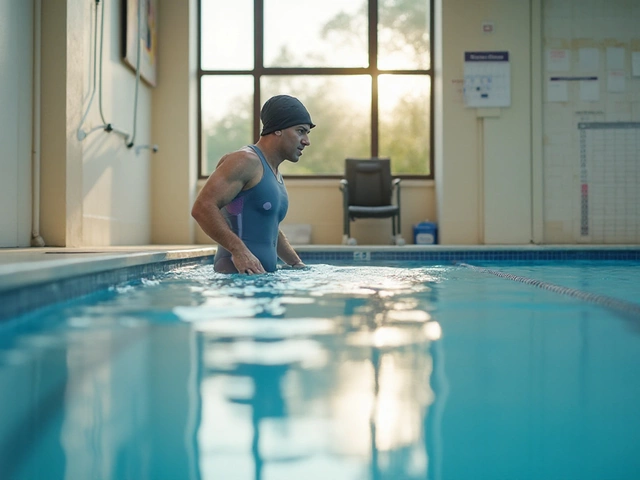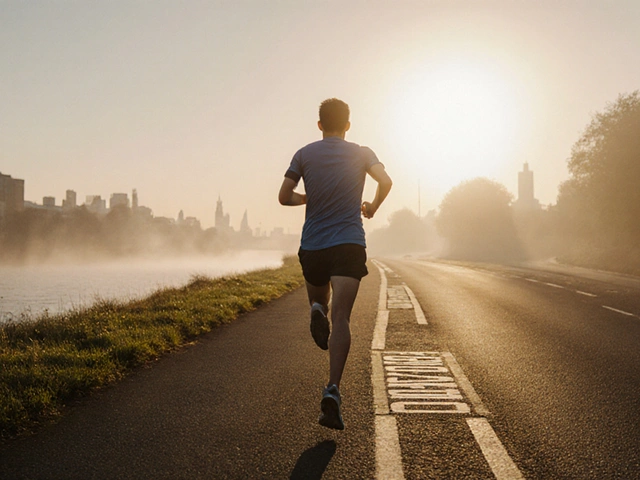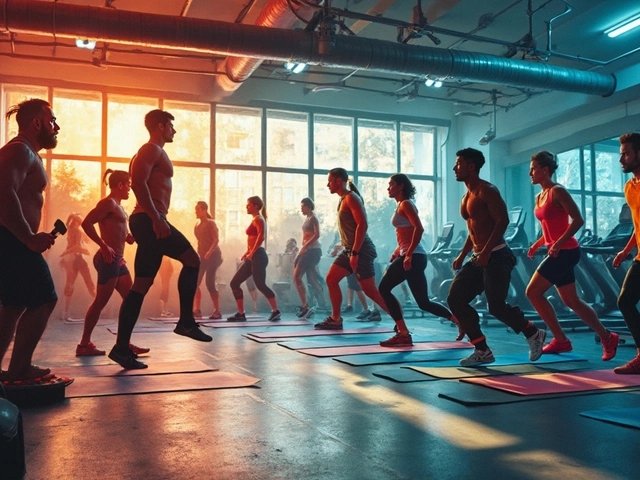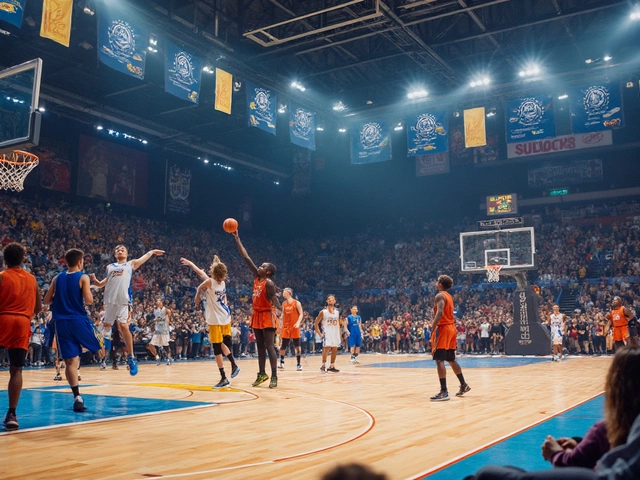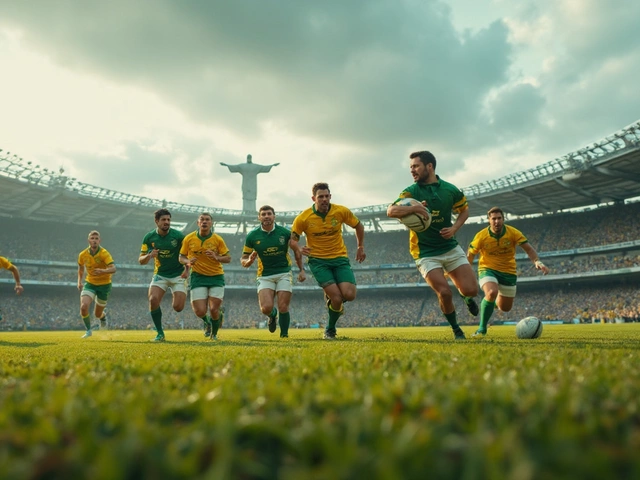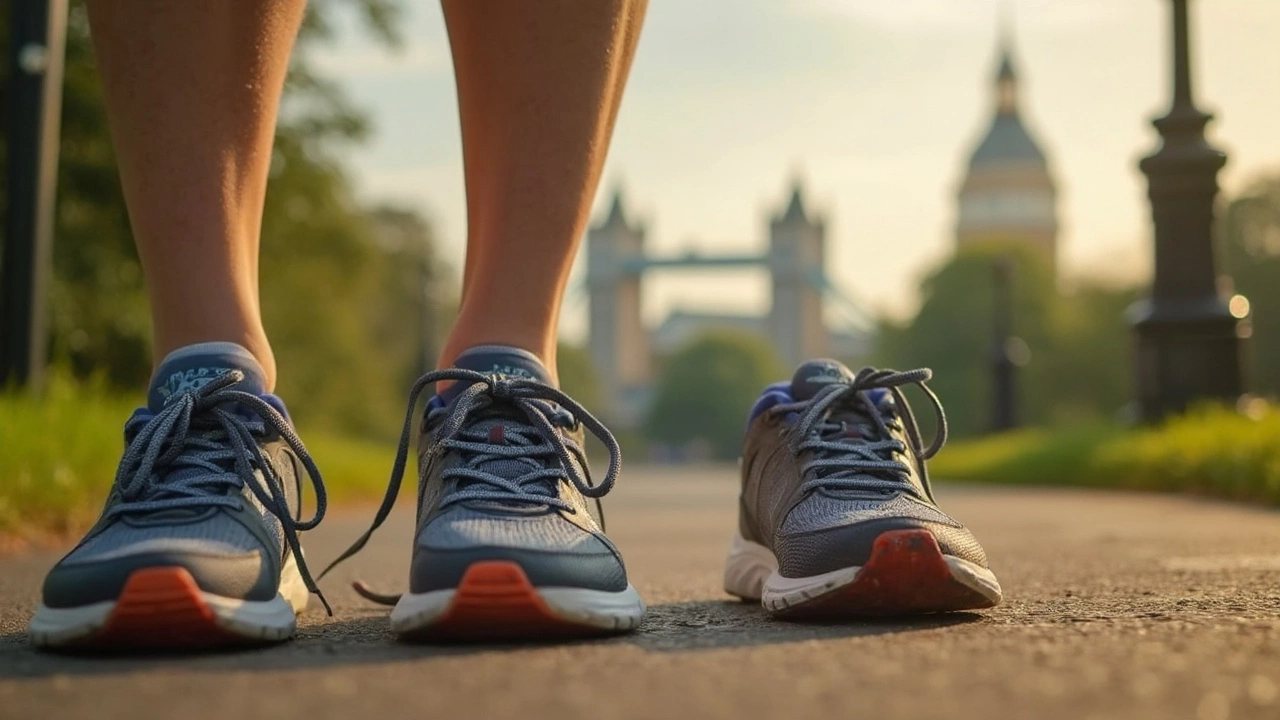
Running Shoes May 25, 2025
Should Running Shoes Be a Size Bigger?
Ever wondered why your toes feel jammed or why you get blisters when you start running longer distances? You’re not alone. Tons of folks just grab their regular sneaker size and hit the road, only to realize something feels off. There’s a real reason lots of experienced runners swear by going half a size or even a full size up when buying running shoes.
Here’s the thing—feet swell. Even if you’re sitting on the couch now, just twenty minutes of jogging can leave your feet noticeably bigger. And if your shoes are too tight, you’ll notice pain, black toenails, or blisters, which can knock you out of action for weeks. No one likes sitting on the sidelines with a foot soaked in bandages.
The practice of sizing up isn’t some weird runner myth. It’s rooted in simple biology and the reality that feet need space, especially on downhills or long runs when every step shoves your toes forward. Let’s cut through the confusion and talk real solutions for comfy, happy feet—so you can focus on hitting a new PR instead of nursing sore toes.
- Why Sizing Up Even Matters
- How Your Feet Change While Running
- Common Mistakes Runners Make
- Tips to Find Your Perfect Fit
- Real Runner Stories and Expert Advice
Why Sizing Up Even Matters
This isn’t just about comfort—it’s about protecting your feet so you keep running, not limping. Let’s get straight to it: running puts real pressure on your toes, toenails, and the tops of your feet. When you lace up a shoe that’s a bit too snug, every step can be a grind. Over time, this adds up to missing toenails, painful blisters, or even stress fractures. Yikes.
Here’s something cool—studies by the American Orthopaedic Foot & Ankle Society found that about 72% of people are actually wearing the wrong shoe size. A big chunk go too tight, thinking they’re getting a secure fit, but end up with injuries instead. The go-to fix? Sizing up by half a size or more for running shoes.
Let’s break down what’s really happening inside your shoe when you run. Check out this comparison table to see the risk factors tied to too-small shoes vs. sizing up:
| Feature | True-to-Size (Tight Fit) | Sized Up |
|---|---|---|
| Black Toenails | Common | Rare |
| Blisters | Frequent on long runs | Much less common |
| Foot Swelling | No room for expansion | Room to swell safely |
| Comfort on Downhills | Toes jam into the front | Toes have space |
| Injury Risk | High | Low |
Going for a little extra space can keep your feet from getting hammered. If you add up the miles, that’s more comfort and fewer lost days from weird injuries. Most running shoe brands even say so on their websites—Nike, Saucony, ASICS, and Brooks all recommend at least a thumbnail’s width of space in front of your longest toe. That’s usually about half a size up from your regular street shoes.
Why? Because after a good run, your feet can swell as much as 5-10%. Sizing up isn’t just about what fits standing still—it's about what fits running shoes when your feet are in motion and pumped full of blood.
How Your Feet Change While Running
Your feet don’t just sit there and take a ride when you run; they constantly adapt and change. One of the biggest changes is swelling. After just a few miles, your feet can swell up to half a size larger than normal. Blood flow increases to help cool you down, but extra fluid means your toes push forward and your shoes can start to feel cramped.
It’s not just swelling. With every footstrike, your arches flatten a bit more than when you’re walking. This means even more length and width are needed inside your shoe. The more you run, the more space your foot demands. If you’ve ever finished a long run and found your shoe laces stretched tight, you’ve felt this first-hand.
Downhill running cranks up this effect. Gravity and momentum shove your toes right up against the end of your shoe, upping the chances for bruised toenails and painful blisters. It’s not just about comfort—poor fit leads to real injuries.
| Change | What Happens | How Much |
|---|---|---|
| Swelling | Feet expand from extra blood flow and fluid | Up to half a shoe size |
| Arch Collapse | Arches flatten under repeated impact | Foot gets slightly longer and wider |
| Toe Creep | Toes push forward, especially on downhills | Higher risk for bruising or blisters |
All these changes make choosing the right running shoes size more critical than you might think. Runners often ignore this and stick with their “normal” shoe size, but that’s how blisters and black toenails start. A little extra room up front can save you a lot of trouble down the road.
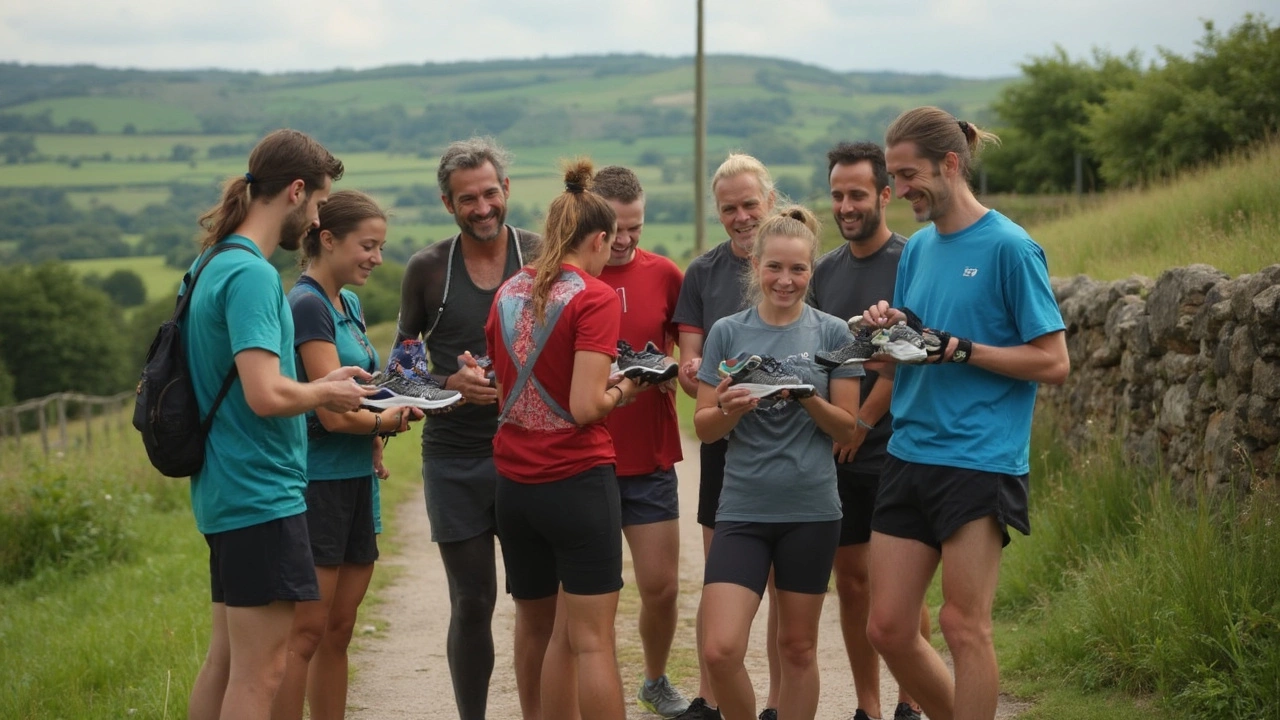
Common Mistakes Runners Make
When it comes to buying running shoes, people mess up in a few ways that can really mess with comfort and performance. Probably the biggest slip-up is just sticking with whatever shoe size you wear for everyday sneakers or dress shoes. Regular shoes aren't put through the swelling and pounding of two miles, ten miles, or more, so that number isn't always right for running.
A lot of runners don't consider the way feet swell up during runs. Your feet can grow by up to half a size or more after just 30 minutes of running. If there's no wiggle room up front, your toes get banged up.
Another classic mistake is shopping late in the day but not being consistent. Feet swell naturally through the day, so shoe fit at 8 a.m. can be totally different than fit at 4 p.m. Try shoes on after you've been up and moving.
Ever buy shoes and immediately try them with thin socks? That's a trap. Running socks are usually thicker and designed to handle sweat and heat, so your fit can totally change.
- Not checking for enough room in the toe box (expert tip: you want about a thumb’s width between your longest toe and the end of the shoe).
- Ignoring foot shape—wide or narrow, high arches or flat feet all need different fits.
- Not testing shoes out by jogging in the store or on a treadmill when possible.
If you want to know how common these mistakes are, check this:
| Mistake | Percent of Runners Doing This |
|---|---|
| Buying too-small size | 42% |
| Ignoring natural foot swelling | 68% |
| Not trying on shoes in the afternoon | 53% |
| Never testing shoes by jogging before buying | 49% |
Skipping these details leads to black toenails, numbness, and blisters. Nail it from the start and your feet will thank you on every run.
Tips to Find Your Perfect Fit
Nailing the right size for your running shoes can save you from black toenails, sore arches, or wasted money on returns. A lot more goes into it than just knowing your regular size. Follow these simple, proven steps to find shoes that feel custom-made for your feet.
- Always measure both feet at the end of the day. Feet swell during the day, just like they’ll swell on a run. Most people have one foot that’s a little bigger than the other—go with the larger one for sizing.
- Bring your running socks. Try on new shoes with the same socks you’d actually use on your runs. That thickness makes a real difference in how the shoe fits.
- Check the thumb test. You want about a thumb’s width (roughly half an inch) of space between your longest toe and the end of the shoe. Less and you’ll risk bruising. More and you’ll slide around and get blisters.
- Walk and jog in the store. Don’t just stand there—move around like you’re actually running. Some shops have treadmills, but even a quick jog down the aisle helps.
- Mind the width. Shoe width is as important as length. If your feet are wide, ask for wider options. Too snug and you’ll notice numbness or hot spots within a mile or two.
- Read sizing charts and online reviews. Sizing can be weird between brands. For example, Asics and Brooks often run small; Saucony and New Balance can fit a bit longer.
Here’s a quick cheat sheet with how top brands usually fit, based on feedback from thousands of runners:
| Brand | Fit Note |
|---|---|
| Nike | Runs small/narrow |
| Adidas | True to size |
| Asics | Can be short, try half size up |
| Brooks | Slightly short, try half size up |
| Saucony | True to size |
| New Balance | Roomy, true to size or half down |
And don’t get stuck on the number. It’s just a guideline—comfort beats size every time. If a bigger size feels airy but secure when you run, roll with it. Better blister-free than size-obsessed.
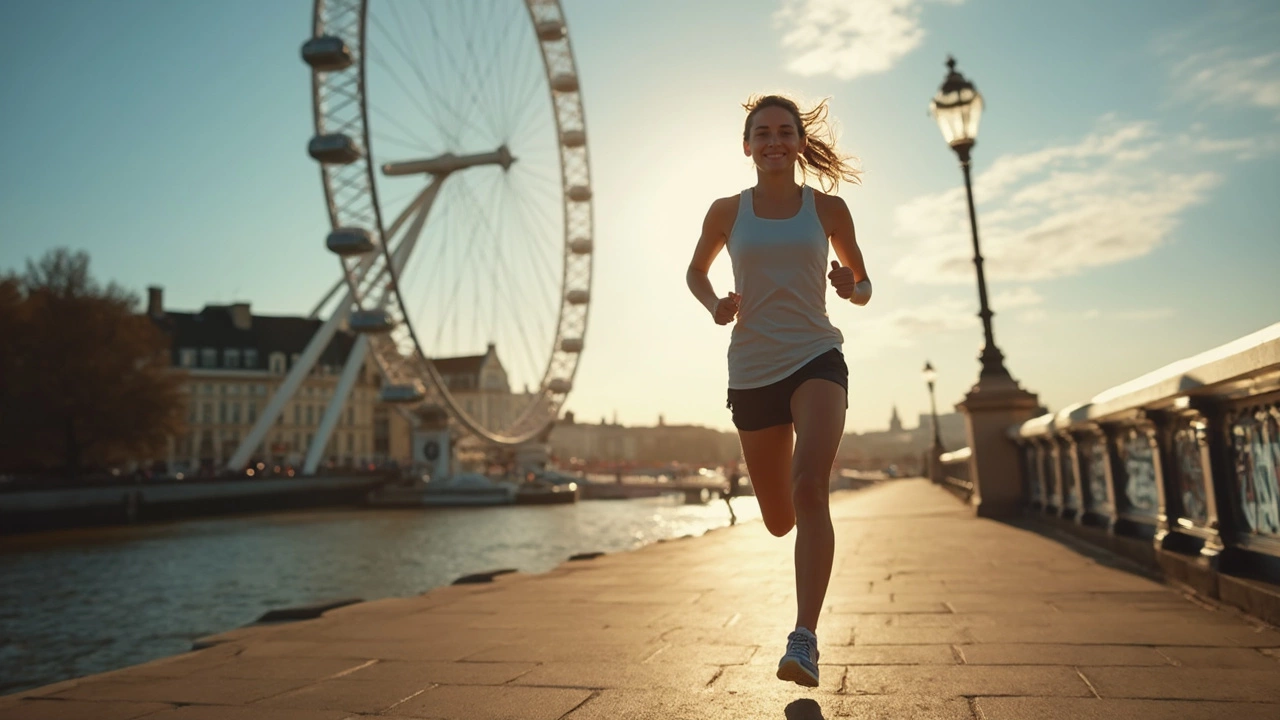
Real Runner Stories and Expert Advice
If you ask around at any local running club, the answers about shoe size are pretty much unanimous: most runners buy shoes at least half a size up from their everyday sneakers. Jenny, who completed her first marathon last year, says, “After my first 10-mile run, I lost a toenail because my shoes were too tight. Now I go up a size in running shoes, and blisters are pretty much a thing of the past.”
Some coaches—like John Swanson, certified by the RRCA—recommend checking for a thumb’s width of space at the front of your shoe. Swanson says, “If you can’t wiggle your toes or if your big toe is right at the end, you risk toenail issues and numbness during runs.” It’s not just his opinion either—research from the American Academy of Podiatric Sports Medicine backs this up, stating runners should leave about a half inch of extra room for foot swelling and movement.
How common are problems from shoes that are too small? A 2023 survey by RunRepeat with over 10,000 runners found that nearly 58% reported blisters in the first year of regular running. Out of these, 74% admitted they started out wearing their normal street shoe size for running. The pattern’s so clear, most specialty running stores now measure your foot late in the day (when it’s slightly swollen) to help you find the right size.
| Runner Survey Question | Percentage |
|---|---|
| Runners who wear a bigger size for running | 68% |
| Reported fewer blisters after sizing up | 80% |
| Regret buying regular shoe size for running | 63% |
So what do podiatrists say? Dr. Emily Splichal recommends testing shoes with running socks and leaving enough space for toe splay. She adds, “If you run long distances, your foot can expand by more than 5% in volume, so cramping your toes is just asking for trouble.”
Here’s a simple checklist most experienced runners follow to avoid problems with running shoes:
- Always try shoes on late in the day or after a short run.
- Wear the socks you’ll run in—thicker socks can make a difference.
- Stand up and walk around; your feet should not touch the front.
- Check that you can wiggle all your toes without straining.
- Don’t buy a shoe hoping it will "stretch"; running shoes don’t work that way.
Listening to real runners and reputable experts makes one thing crystal clear: buying running shoes that fit a little bigger isn’t just a comfort thing—it actually helps you run farther, avoid injuries, and keep your feet feeling good run after run.
